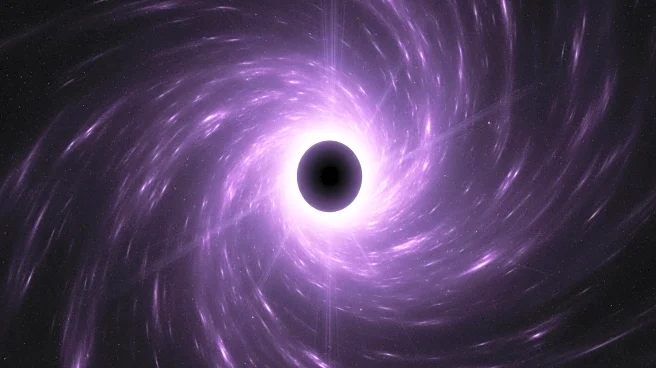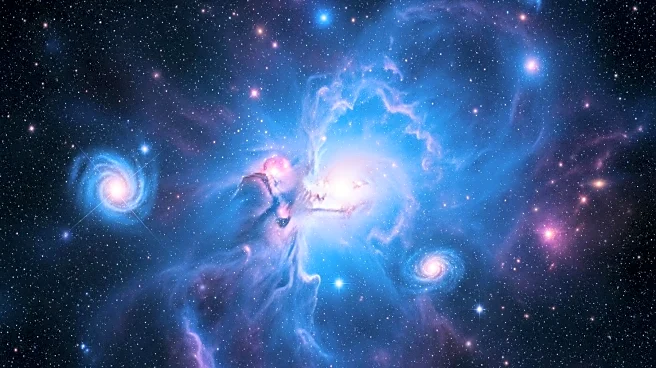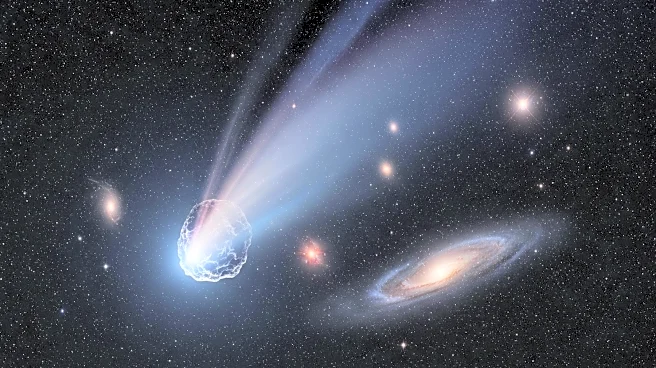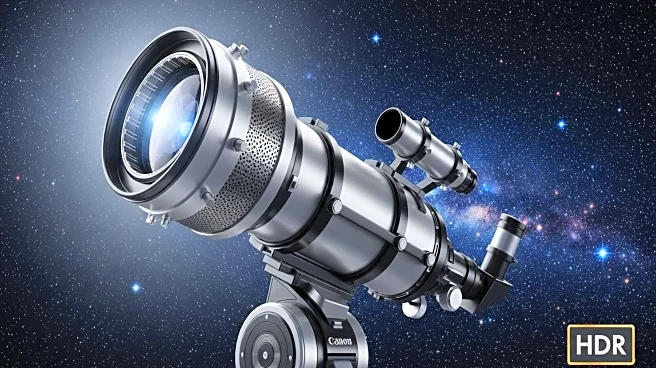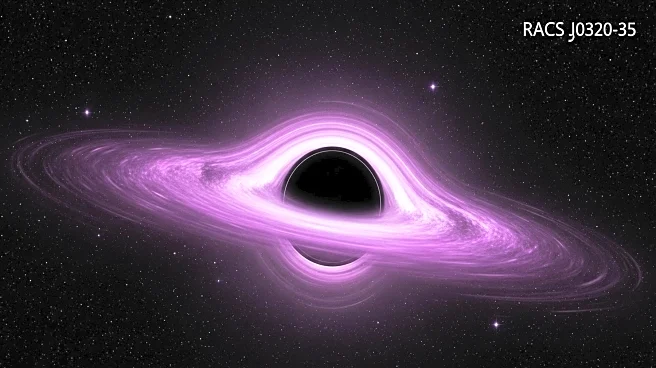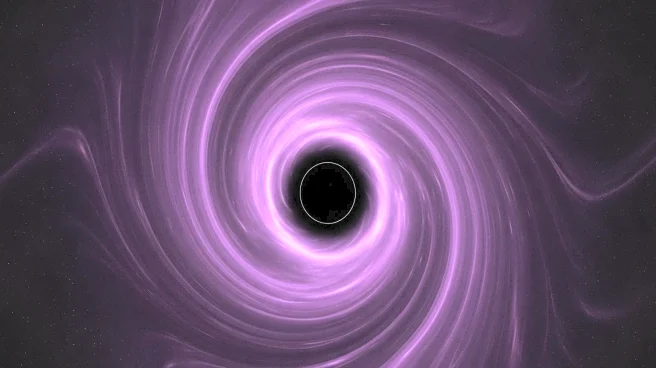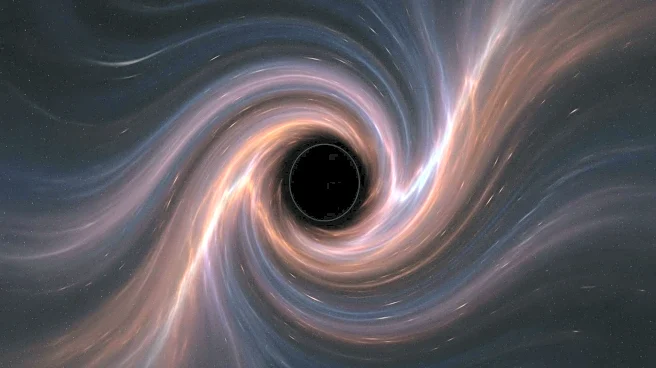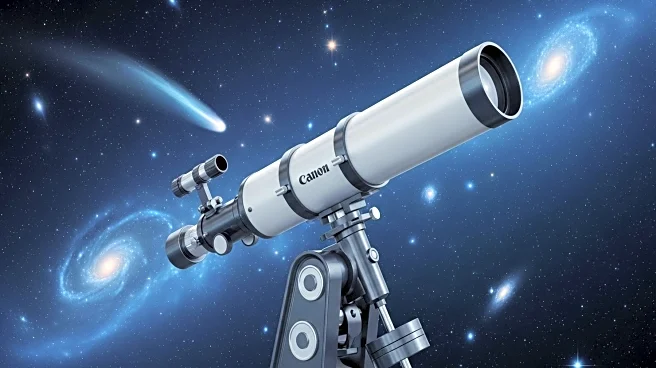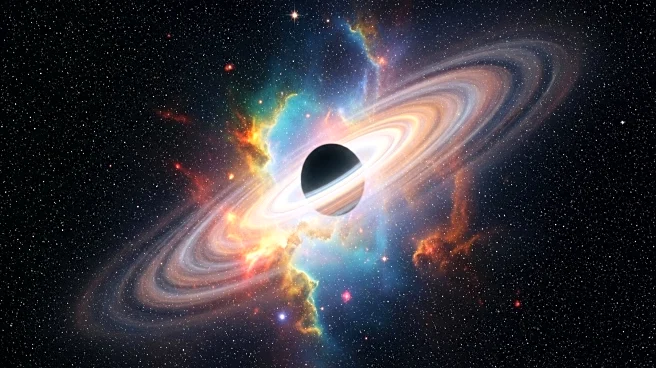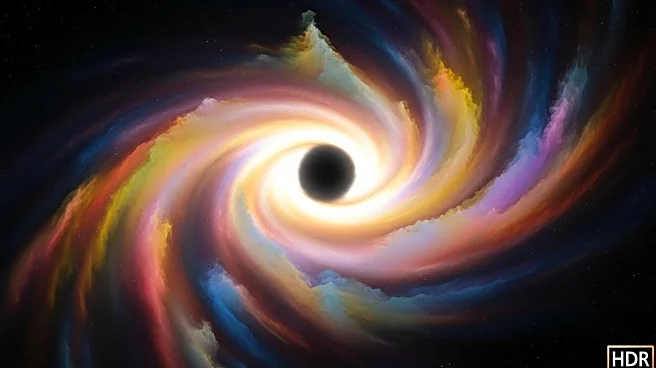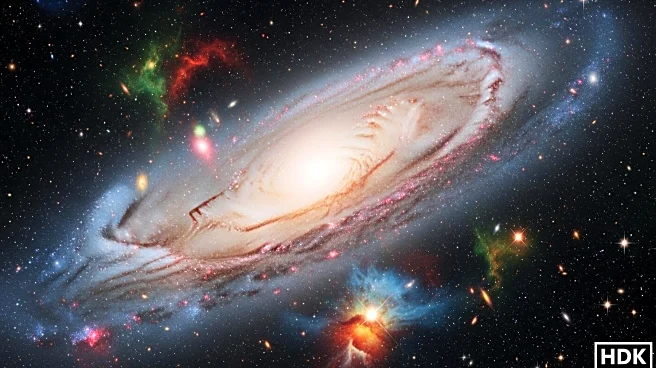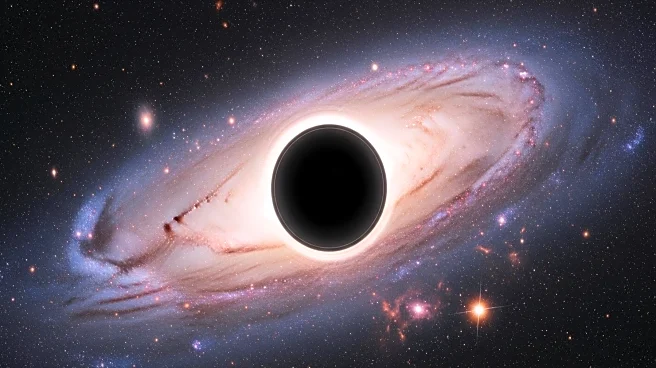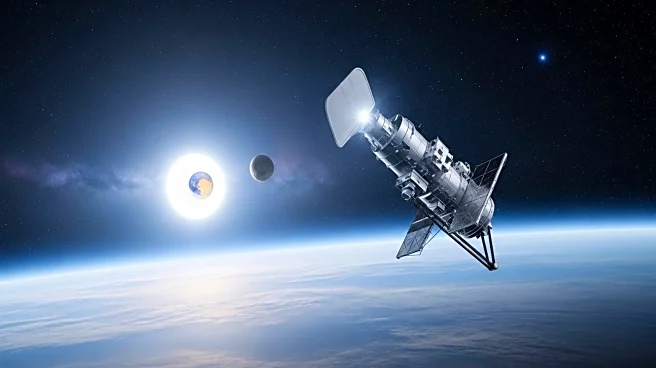What is the story about?
What's Happening?
Astronomers have discovered a supermassive black hole, RACS J0320-35, growing at an unprecedented rate, challenging existing cosmic models. Located in the early universe, this black hole is expanding at over twice the theoretical limit, known as the Eddington limit. Using NASA's Chandra X-ray Observatory, researchers have studied its rapid growth, which suggests that super-Eddington growth may have been more common in the early universe than previously thought. This discovery raises questions about the formation and evolution of black holes and their role in shaping the cosmic landscape.
Why It's Important?
The discovery of RACS J0320-35 challenges current understanding of black hole growth and cosmic evolution. It suggests that supermassive black holes may have formed and evolved through mechanisms not yet fully understood. This has implications for theories about the early universe and the processes that governed the formation of massive cosmic structures. The findings could lead to revisions of existing models and provide new insights into the fundamental nature of black holes and the universe.
What's Next?
Researchers will continue to study RACS J0320-35 and similar objects to explore the mechanisms behind their rapid growth. Further observations and analyses are needed to understand how these black holes can surpass the Eddington limit without destabilizing. The research may also inform future studies of other supermassive black holes and contribute to the broader understanding of cosmic evolution.
Beyond the Headlines
The discovery highlights the importance of advanced technology and international collaboration in advancing astrophysical research. It also underscores the need for continued exploration and observation of the universe to uncover new insights into its fundamental processes. The findings may lead to a paradigm shift in how scientists understand black hole growth and the dynamics of the early universe.
AI Generated Content
Do you find this article useful?
